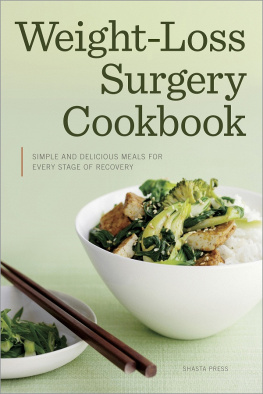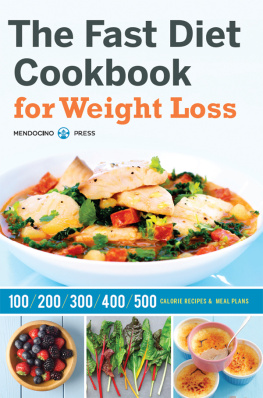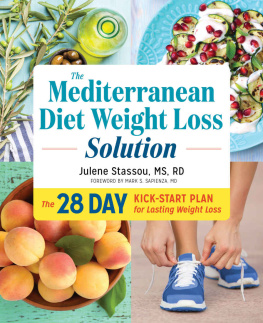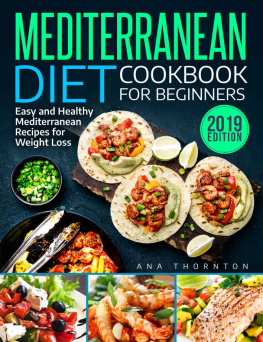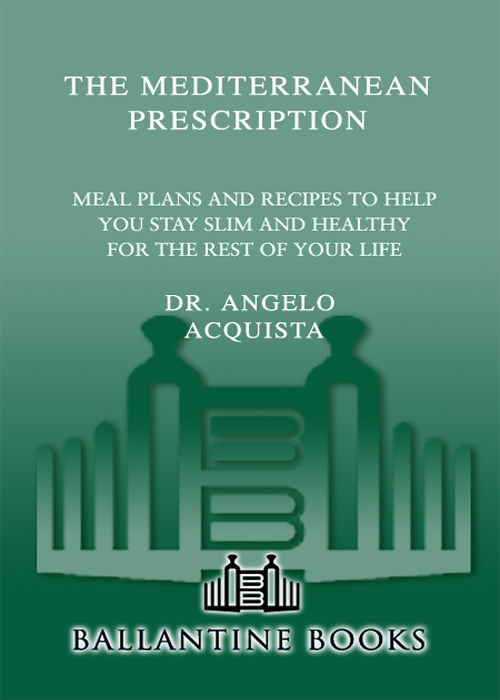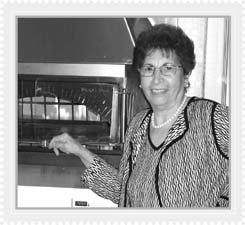A LSO BY A NGELO A CQUISTA, M . D.
A CKNOWLEDGMENTS
Much of what I have accomplished in cooking has been through the somewhat painful trials and tribulations of trying, failing, and finally succeeding. During the many times it takes to get a recipe exactly right, my family has always been there to offer advice, help with preparation, and taste test the new creation. Most important, they have been there to inspire me to cook in the first place. My mother, Rosaria Sara Acquista, especially, passed on her interest in cooking to me. This passion caught up others as well, as the rest of my family, including my brother and his wife, Dominick and Cathy Acquista, and even their three childrenSalvatore, Dominick, and Sarahave picked up the family tradition. My father has always supported my efforts, and in recent years has joined me in the kitchen as well. My dear friends Dr. V. A. Subramanian and William Hyman have also tried all of the new recipesenduring the bad ones and helping guide me to the good ones.
I am also indebted to the late Dr. Peter Saita, who was not only my mentor and inspiration to become a doctor, but who also devised the original diet plan I use that has changed the lives of so many of my patients.
I am tremendously grateful to my medical writer, Laurie Vandermolen, who expertly researched and shaped this book and made my vision a reality.
This book would not have been possible without the efforts of many people: Danielle Durkin, my most excellent editor at Ballantine; Laura Dail, my first-rate agent; and Michael Feldman, coordinator extraordinaire. I would like them to know how appreciative I was of their understanding while my father was ill, and I thank them all for helping me pursue this project.
Thank you also to my nephews Angelo Acquista, for helping prepare many of the recipes, and Dominick Acquista, for aiding with the preliminary research; to Susan Raatz, Ph.D., R.D., for her expert nutritional advice and dedication to accuracy; and to Rachel Dugas and Brigid-Ann Dibella, for their support in preparing the manuscript.

Laurie Vandermolen would like to thank Danielle Durkin for her perpetual enthusiasm, patience, wisdom, and good cheer; as well as Michael Feldman, for expertly managing this project with finesse and humor; Laura Dail, for her inspiration and dedication; Dr. Raatz, for her invaluable expertise and assistance; and, of course, Dr. Acquista, for giving her the opportunity and privilege to write for him. She also wishes to extend her never-ending gratitude to her friends and familyespecially Mom, Dad, Julie, Sheryl, Alex, Charlie, Levi, Brendan, Peter, Joe, Brian, Mary Ball, and most of all Bobher prescription for life.
C ONTENTS
1
2
3
4
Appendix A
Appendix B
Appendix C
Appendix D
1
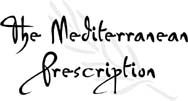
WHEN I WAS A YOUNG COLLEGE STUDENT IN NEW YORK , my father introduced me to a wise, older doctor named Dr. Peter Saita. He was a Sicilian internist who practiced in downtown Manhattan and over time became somewhat of a mentor to me. He used to tell me that being a doctor was the noblest profession, and it was he who inspired me to go to medical school. I kept up my relationship with him throughout medical school and would often accompany him to see patients. He would tell me, The best thing I can do for my patients is to get them to stop smoking and to help them lose weight. This was in the 1970s, when people didnt really pay attention to these issues. He personally saw the connection between being overweight and poor health among his patients and took it upon himself to help those at risk. As a result, he developed a diet that he would describe briefly to his overweight patients, so easy to follow that he didnt even have to write it down, that he saw work over and over. He handed this down to me, a newly graduated doctor, and I never forgot itin part because I had so much respect for this man, but mostly because, as I eventually found again and again with my own patients, it worked.
Years ago as I was starting out as a physician, I tried to help patients lose weight in a more traditional way. I used to tell them how to eat healthily, would give them papers on nutrition, and would refer them to nutritionists, but they werent losing weight. In my frustration, I tried telling them about Dr. Saitas diet. I said, Why dont you try this very simple diet? They would come back to me for a follow-up telling me, I tried the diet, but its difficult. I cant stick to it. I noticed that my American patients didnt have the devotion to food that was found in the Italian culture I grew up in. When I told them the diet included all-you-can-eat fish and chicken entres, they thought fish had to mean salmon or tuna, when there are so many kinds of fish out there. They also didnt know how to cook it, nor did they have healthy, flavorful recipes for chicken. So I took the time to help them lose weight by writing recipes down on my prescription pad to get them started. I would say, Look, its not hard. You just have to be creative. Here, try these, and Id scribble a couple of fish or chicken recipes down for them, based on my and my mothers Sicilian recipes. And miraculously, my patients started losing weight. They couldnt believe the easy and delicious meals they could eat while they were losing weight.
Initially, I would prescribe the diet to patients who had illnesses that had clear connections to being overweight, such as hypertension, type 2 diabetes (as opposed to type 1, which youre born with), and sleep apnea. As my medical practice continued, however, it became apparent how much being overweight set the stage for untold numbers of illnesses and diseases, and how important it was to lose weight as preventive medicine.
My patient profile is no different from the patient population of doctors offices around the country. My new patients are coming in increasingly heavier, and the illnesses related to being overweight and obese are becoming much more frequent. The weight of Americans has been rising at an astonishing rate since the early 1960s due to a combination of diet, meal size, activity habits, genetics, and food industry and media influence. As most people know by now, either by reading statistics or by just glancing around themselves at a crowded location, around two-thirds of our citizens are either overweight or obese. And there appears to be every indication that this trend will continue. Not coincidentally, the United States is in the midst of major epidemics of heart disease, stroke, high blood pressure, cancer, type 2 diabetes, and hepatitis. These conditions are all clearly exacerbated, if not caused, by excess weight and are major causes of disability and death in this nation. They also account for a significant amount of our health care dollars.
THE SHOCKING STATISTICS




